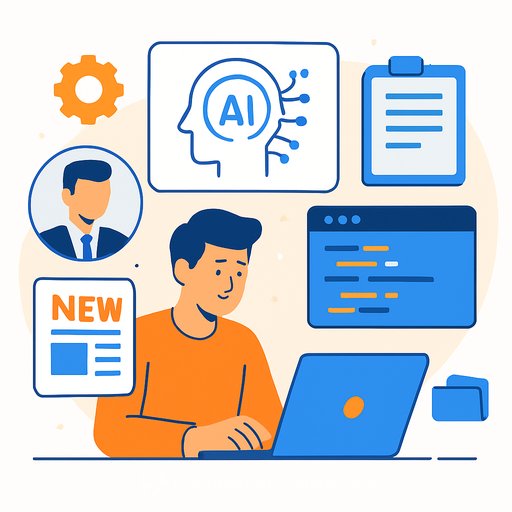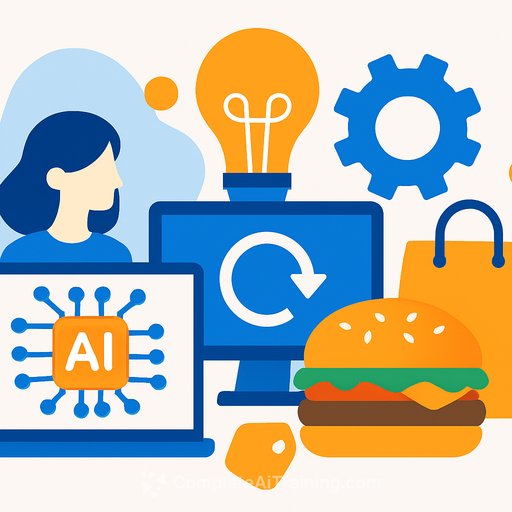Supernova raises $9.2M to launch Portal, an AI workspace for enterprise product teams
Supernova has closed a $9.2 million Series A to launch Portal, an AI-powered product development workspace that spans ideation to code. The round was led by Taiwania Capital with participation from J&T Ventures, Reflex Capital, Kaya, Credo Ventures, EQT Ventures, Wing VC, and Y Combinator. Funds will support hiring, go-to-market, and expansion into Asian markets with Taiwania's support.
Portal builds on Supernova's platform for design systems and code, embedding AI agents directly into collaborative product spaces. The goal is straightforward: cut cycle time, clean up handoffs, and keep design, PM, and engineering aligned without extra overhead.
What Portal brings to product teams
- Lifecycle coverage: from early product strategy and specs to implementation, documentation, and code updates - in one workspace.
- AI "vibe-coding": agents coordinate routine and strategic tasks across workflows (e.g., drafting PRDs, syncing design tokens to code, generating tickets, summarizing changes).
- Design-to-code continuity: built on Supernova's design systems foundation to reduce drift and improve consistency.
- Enterprise-first fit: structure and permissions for teams that already run established processes and governance.
How it differs from prototyping tools
Unlike prototyping tools such as Lovable and v0 that focus on quick MVPs or UI mocks, Portal targets the entire product lifecycle. It's positioned to sit inside your existing stack and processes rather than replace them, aiming to shrink the gaps between documentation, design, and shipped code.
Why this matters now
Fragmented docs, inconsistent handoffs, and resource bottlenecks slow down roadmaps. Supernova's bet is that AI agents inside the core workspace can remove these friction points without forcing teams to rework their operating model.
As founder and CEO Jiří Třečák put it, the aim is to give individuals the ability to "ship like an entire team" and help full teams ship "10x faster," so they can focus on quality and outcomes.
Practical next steps for product leaders
- Start with a narrow pilot: one product area or feature set with clear scope and stable interfaces.
- Baseline metrics: measure current cycle time from spec to merged PR, handoff latency, defect leakage, and rework rate.
- Integrate where work already happens: connect design system, repo, CI, and issue tracker; keep existing rituals, automate the handoffs.
- Define AI guardrails: ownership of outputs, review steps, approval paths, and where human sign-off is required.
- Document the new flow: update RACI, templates, and checklists so teams know what the agents do and what they don't.
- Run a 4-6 week trial: compare KPIs to baseline, gather qualitative feedback from PM, design, and engineering.
KPIs to track
- Spec-to-PR cycle time and design-to-dev lead time
- Handoff latency and % of work blocked per sprint
- Defect leakage and rework hours tied to spec drift
- Doc freshness (e.g., last-updated within SLA) and coverage
- Engineer and designer satisfaction (NPS or pulse)
Funding and go-to-market notes
- $9.2M Series A led by Taiwania Capital; participation from J&T Ventures, Reflex Capital, Kaya, Credo Ventures, EQT Ventures, Wing VC, and Y Combinator.
- Focus areas: team growth, Asian market expansion with Taiwania's support, and scaling product and marketing.
Bottom line
If your team struggles with scattered specs, slow handoffs, and design-code drift, a lifecycle-first AI workspace is worth a pilot. Keep the scope tight, wire it into your existing tools, and let the data decide if it earns a broader rollout.
If you're upskilling your org on practical AI for product work, explore role-based training options at Complete AI Training.
Your membership also unlocks:






